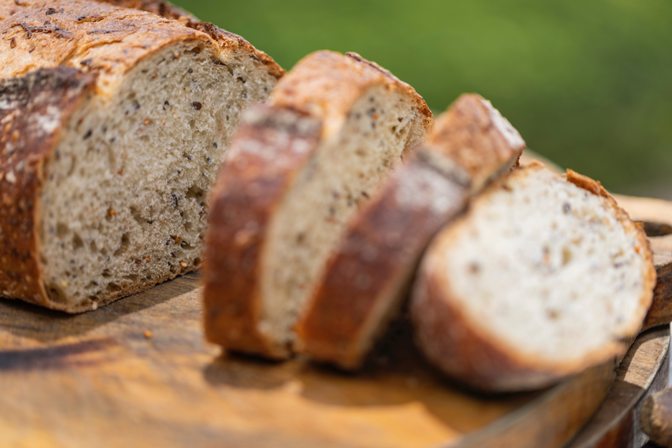If your wallet is feeling stretched these days, you are not alone. When money becomes scarcer, many Americans turn to cheap fast food and junk food to fill their rumbling stomachs. The adage that healthy eating is more expensive has been around a while, but it is deceptive. Not only is nutritious eating on a budget possible, but it is also necessary to maintain or achieve good health. Thankfully, with some know-how, planning, and a willingness to try new things, you can eat a healthy diet without breaking the bank.

Before digging into tips for budget shopping, let us review the foundation of nutritious eating. Consider MyPlate (ChooseMyPlate.gov) as a guide for healthy eating. It encourages half your plate of veggies and fruit, a quarter plate of lean protein, a quarter plate of grain (particularly whole-grains), and a portion of dairy product. Here is a quick guide to saving money by food group:
Veggies and Fruits
We all know that eating at least five servings of vegetables and fruits can help cut the risk of developing many chronic diseases. But did you know that research shows it can also boost your mood? We could all use this right now! Contrary to popular belief, the fruits and veggies you select don’t always have to be fresh to count in your daily total. Canned, frozen, and dried versions are just as nutritious and are usually cheaper. Make sure to pick veggies canned with no salt added and fruits canned in their juice to avoid excess salt and sugar. As for frozen versions, choose those that are without sauces and marinades. Watch store flyers for the best deals on fresh produce, and buy them when they’re in season for the best quality and value.
Grain Foods
Whenever possible, select whole-grains such as whole-wheat bread, pasta, and cereal as well as brown rice, quinoa, and oats. These grains contain all their nutritious parts and have more fiber than their white counterparts. Watch for sales and consider buying in bulk to save on non-perishables. You can freeze extra bread and use it as needed.
Dairy Products
Dairy products are our most important source of calcium. Research indicates they help lower high blood pressure and maintain a healthy weight and strong bones. Look for store brands of yogurt, milk, and cheese that are more affordable.
Protein Foods
Many folks think half their plate should be filled with a portion of meat, poultry, or seafood (when only a quarter is enough to meet our protein needs). Imagine how much money could be saved by following the recommendations. Meat, poultry, and seafood are some of the most expensive items on the grocery list, so by buying less, you can help your wallet as well as your health. This is especially true by replacing some high saturated fat meats such as beef with more plant foods. Stretch meat in casseroles and stir-fries by using less of it and adding more veggies and whole-grains. Another alternative for meat is legumes (dry or canned beans, peas, and lentils). They are excellent sources of protein, fiber, and other nutrients with the bonus of being much cheaper.
Other Tips for Thrifty Shopping
- Determine how much money you have in your food budget. Divide this amount into a weekly or bi-weekly amount, depending on how often you shop. Pay attention to the price of the items you buy to help you stay within your budget.
- Plan your meals and snacks ahead of time. Do an inventory of the items you have on hand to help you develop your meal plan. There is no need to buy more food if you can first use what’s in your pantry, fridge, and freezer.
- Use the store flyer when making meal selections to maximize money savings.
- Once you have your meal plan, use it to write your grocery list. Make sure to save both meal plan and list- you can develop a rotation of three to four weeks and make minor adjustments to your shopping list as needed. This strategy can save you time, money, and health.
- Once at the store, stick to your list.
- Resist temptations at the check-out. Those snack foods and candy are put there for impulse buying. Leave them behind.
- Compare unit prices to see which brand is the best value.
- Consider buying in bulk, but only if you can use the food before it goes bad.
- Think about the food you throw away. For less waste, buy or cook only what you need. Food tossed is money in the trash.
- Ask about discounts. Most grocery stores have a senior discount or loyalty program.
- Use coupons when you can, but only for things you buy anyway.
- Take advantage of store brands. They offer quality for cheaper.
Brigitte Harton is a consultant Registered Dietitian at Age Well and a Board Certified Wellness Coach.
If you find yourself still struggling to put food on the table, contact Age Well’s Helpline at 800-642-5119. Age Well can help you find out if you qualify for 3SquaresVT, Meals on Wheels, or other programs to help you eat healthy and make ends meet.
Related Articles & Free Magazine Subscription

Do You Need to Take a Dietary Supplement?


Comment here